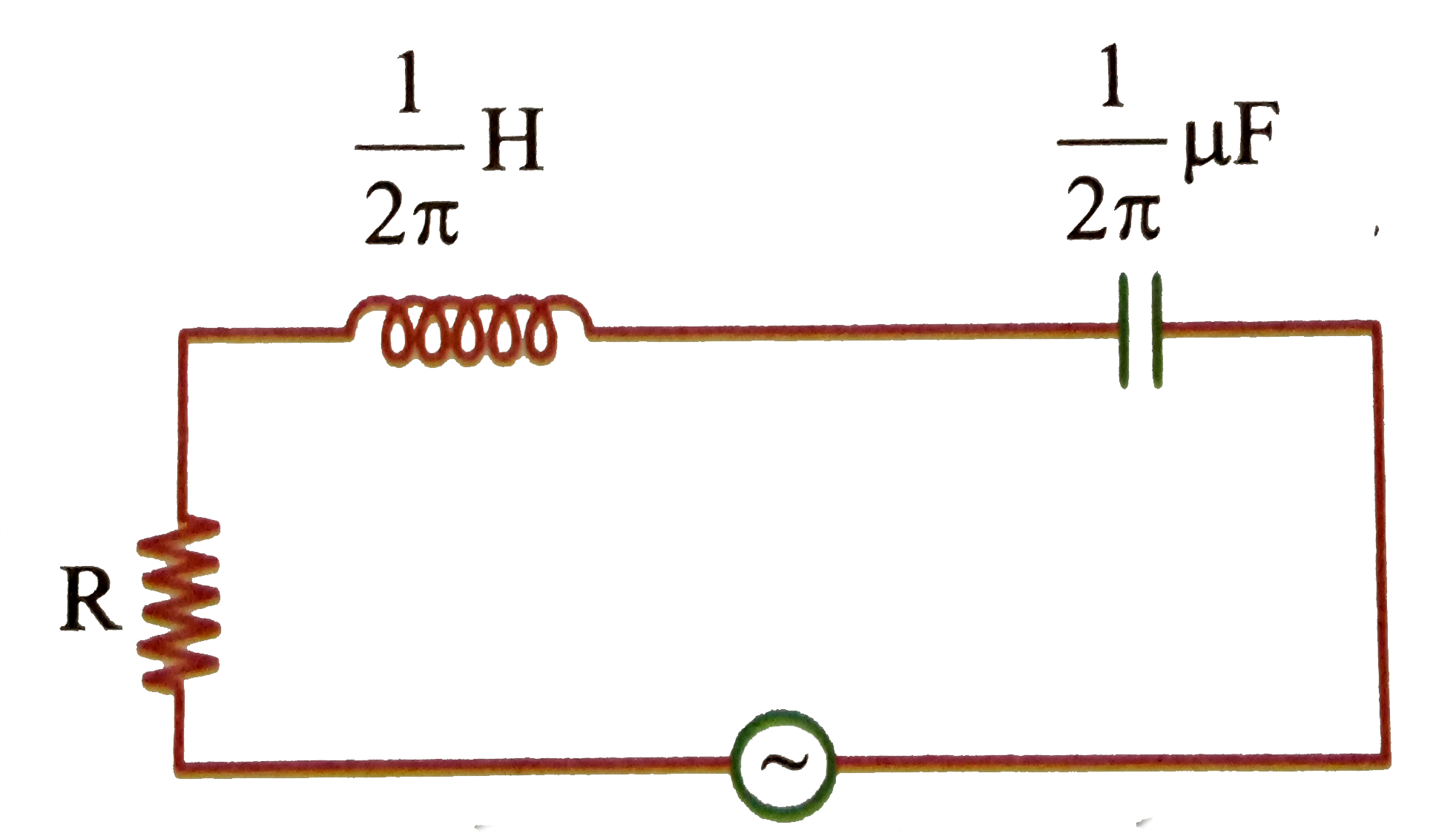In an LCR series ac circuit, the current is
always in phase with the voltage
lags the generator voltage
leads the generator voltage
none of these
The correct Answer is:D
To solve the question regarding the behavior of current in an LCR series AC circuit, we can break it down into clear steps:
1. Understanding the Circuit:
- In an LCR series circuit, we have an inductor (L), a capacitor (C), and a resistor (R) connected in series. The current flowing through the circuit is the same through each component.
2. Current in the Circuit:
- The current in a series LCR circuit is constant. This means that the same current flows through the resistor, inductor, and capacitor at any given moment.
3. Phasor Diagram:
- To analyze the phase relationships, we can draw a phasor diagram. In this diagram, we take the current as the reference phasor (0 degrees).
- The voltage across the resistor (Vr) is in phase with the current.
- The voltage across the capacitor (Vc) leads the current by 90 degrees.
- The voltage across the inductor (Vl) lags the current by 90 degrees.
4. Comparing Voltages:
- We can analyze three cases based on the relationship between the voltages across the inductor and capacitor:
- Case 1: If VL>VC (inductive reactance is greater than capacitive reactance), the total voltage Vtotal leads the current.
- Case 2: If VL<VC (capacitive reactance is greater than inductive reactance), the total voltage Vtotal lags behind the current.
- Case 3: If VL=VC (the circuit is at resonance), the voltages cancel each other out, and the total voltage is equal to the voltage across the resistor VR, which is in phase with the current.
5. Conclusion:
- The behavior of the current in an LCR series circuit can be summarized as follows:
- The current is always in phase with the voltage across the resistor.
- The total voltage can either lead or lag the current depending on the relationship between VL and VC.
- At resonance, the current and voltage are in phase.
- In an LCR series circuit, we have an inductor (L), a capacitor (C), and a resistor (R) connected in series. The current flowing through the circuit is the same through each component.
- The current in a series LCR circuit is constant. This means that the same current flows through the resistor, inductor, and capacitor at any given moment.
- To analyze the phase relationships, we can draw a phasor diagram. In this diagram, we take the current as the reference phasor (0 degrees).
- The voltage across the resistor (Vr) is in phase with the current.
- The voltage across the capacitor (Vc) leads the current by 90 degrees.
- The voltage across the inductor (Vl) lags the current by 90 degrees.
- We can analyze three cases based on the relationship between the voltages across the inductor and capacitor:
- Case 1: If VL>VC (inductive reactance is greater than capacitive reactance), the total voltage Vtotal leads the current.
- Case 2: If VL<VC (capacitive reactance is greater than inductive reactance), the total voltage Vtotal lags behind the current.
- Case 3: If VL=VC (the circuit is at resonance), the voltages cancel each other out, and the total voltage is equal to the voltage across the resistor VR, which is in phase with the current.
- The behavior of the current in an LCR series circuit can be summarized as follows:
- The current is always in phase with the voltage across the resistor.
- The total voltage can either lead or lag the current depending on the relationship between VL and VC.
- At resonance, the current and voltage are in phase.
Topper's Solved these Questions
Similar Questions
For increasing the sharpness of resonance in a LCR series a.c. circuit, the presence in the circuit should be minimum.
View SolutionSTATEMENT-1 : In series LC(AC) circuit, the current is infinite at resonance.
STATEMENT-2 : In parallel LC(AC) circuit, the current is zero at resonance.
STATEMENT-3 : Series LCR(AC) circuit is used at resonance for turning radio receivers.
View Solution
Knowledge Check
In LCR series AC circuit, the current
Ais always in phase with voltageBalways lags behind the generator voltageCalways leads the generator voltageDmay be in phase, lag behind or lead by the generator voltage depending on the values of L,C and RIn an LCR series circuit the current is
Ain phase with applied emfBlags the applied voltageClead the applied voltageDmay lead or lag behind the applied voltageAssertion : At resonance, LCR series circuit have a minimum current.
Reason : At resonance, in LCR series circuit, the current and e.m.f. are not in phase with each other.AIf both assertion and reason are true and reason is the correct explanation of assertion.BIf both assertion and reason are true but reason is not the correct explanation of assertion.CIf assertion is true but reason is false.DIf both assertion and reason are false.
In an LCR. series circuit the resonating frequency can be decreased by -
View SolutionIn a series LCR circuit

View SolutionThe phase difference between the current and voltage of a LCR series a.c. circuit at resonance is
View SolutionIn a LCR series circuit, if the phase difference between applied voltage and current is zero then
View SolutionThe phase difference between voltage and current in an LCR series circuit is
View Solution
